Don’t Call Me María
AFEDES is fighting through the Guatemalan constitutional courts to have Mayan cloth recognized as intellectual property of the Maya people and receive fair market compensation.
For indigenous Maya women in Guatemala the clothes on their backs are sacred texts of their way of life. They tell a story of spirit and war, the heritage of an ancient people invaded by European warriors. They are also artistic creations that take days, weeks and even months to construct.
Sometimes, they are the equivalent of a 401(k) that must be cashed in to finance family necessities. Angelina Aspuac, a woman weaver living near the capital city, remembers her mother’s tears as she sold her hand-woven huipil (blouse) to afford food for Aspuac and her siblings.
“I remember, as a child, my mother had a beautiful huipil,” Aspuac said, “It was the only one she had for special celebrations or ceremonies, and one day she did not have money to feed us. The woman who bought clothing came by to see if she had anything to sell and with all the pain of her soul, she had to sell it to buy us food.”
Aspuac, the daughter of farmers and today a 40-year-old law student and mother of three, is a spokesperson for the rights of Mayan cloth and weavers. She represents the Women’s Association for the Development of Sacatepéquez (AFEDES), a grassroots organization that began in 1985 and now boasts a membership of 1,500 women.
AFEDES is fighting through the Guatemalan constitutional courts to have Mayan cloth recognized as intellectual property of the Maya people and receive fair market compensation.
“Today we demand that the state give intellectual property rights [protection] over our textiles and Mayan traditional dress,” Aspuac said.
Just 21 years after the Guatemalan government signed a peace accord with guerrillas and ended a long civil war where over 200,000 indigenous people were killed or disappeared and a million were displaced, weavers, like Aspuac, are pounding on the door of the Guatemalan Constitutional Court.
On May 16, 2016, hundreds protested outside the Guatemalan Congress and the Supreme Court to demand the government stitch up a loophole in the intellectual property laws. The lack of protection allows national and multinational companies to own and profit from Mayan ancient designs without fair compensation returning to the weavers.
At a public hearing on June 28, 2016 in Guatemala City at the Constitutional Court, indigenous activists asked that copyright laws shield Mayan designs from plagiarism as they now protect musicians and authors. They still await an outcome.
“Our ancestral knowledge and our weavings are knit together, we want to share it with the world, but in a fair manner, with rules that are clear. That is what we indigenous women are proposing,” Aspuac said.
La Violencia was a war of atrocities targeting indigenous civilians in order to destabilize the social fabric of the enemy guerrillas. Women and children were targets of rape and killings as the military viciously punished the men who were primarily conducting attacks.
Today, indigenous women face double jeopardy as victims of social racism and gender inequality. Guatemalan literacy rates for all citizens older than 15 are just 81 percent, but, in contrast, literacy rates for women are just 76 percent and for indigenous women only 30 percent. Being publicly recognized in Mayan cloth can prevent upward mobility. Aspuac knows first-hand the daily sacrifices extracted to be a Maya woman in traditional dress.
“There is a lot of racism and sometimes it is easier not to use your traje/corte (traditional clothing), so you won’t be insulted or mistreated in the streets. There comes a point where we truly feel objectified, principally the women. We don’t feel as human beings but as folklorized things, so the struggle is closely tied to creating a dignified image of indigenous peoples,” Aspuac said.
According to Aspuac, the name “María” is a racial slur that is used in the street to refer to a faceless indigenous woman. The name “María” is offensive because it is a colonial name used by the Spanish and reminds the indigenous of when they were forced to abandon their religion, customs and ethnic names. To refer to an indigenous woman as a “María” is to erase her heritage and reduce her to a servile status.
“I think it is important to understand that racism and discrimination is very prevalent here in Guatemala. For Ladino people who are racist, we don’t have a face; they do not see us in our spirituality. That is why they call us ‘Marías,’ which is synonymous to making all of us servants. We can also be professionals. The point is that indigenous women are not seen as attorneys, architects and engineers but rather like servants, especially when we wear our attire in the capital, at the university, in schools in institutes, the treatment we get is different to the one given to the woman wearing pants, a skirt or dress, it is different.”
Weaving is practiced in the context of the Mayan belief system, customs and culture. The designs are rooted in the cosmovision of Mayan traditions and each is more than an arrangement of color and thread. Amarildo Bal, Antiguan restaurateur and Spanish instructor, said the huipils are “not just a design, but sagrado (sacred) stories.” Weavers learn from their mothers when as young as 7 years old, and it is a way of preserving an ancestral heritage.
In San Juan Comalapa, located in the department of Chimaltenango, each hand-woven and embroidered huipil can be read as a history book. According to Natalia Otzin, a 66-year-old weaver, the large red band running through the design signifies the blood shed by her ancestors as they were conquered by the Spanish; multi-colored rhomboids are plates for the traditional sacrifices to the Mayan gods; and the animal figures walking through the design correspond to the protective birds of their city.
Aspuac said that INGUAT, the Guatemalan national tourism bureau, is happy to attract visitors to Guatemala through the promotion of indigenous arts but does little to return funds to a community that still lives without basic municipal services. Although the tourism industry composes an estimated 20 percent of the economy, 75 percent of all indigenous live below the poverty line.
And the indigenous are more than twice as likely to live either in poverty or extreme poverty than the Ladino population. The weavings are highly valued, with a large mark-up when implanted on $1,000 designer bags and belts, but there is little profitability returning to the artisans.
“That is why we advocate for the creation of property rights and industrial property so that some of the profits that are being made come back to the communities so that indigenous people can continue to work their art,” Aspuac said.
But a series of social changes have endangered the practice of traditional weaving—and, thus, the income of thousands of families. When Comalapan weaver Otzin was young, all her clothes were handmade by her family members.
Today, the markets are full of skirts made by machines that have been digitally programmed. These clothes are of lesser quality and last fewer years than handmade—and they are also less expensive.
The appropriation of ancient designs in order to make sales has a storied past. AFEDES said that Mayan designs were forcibly extracted from women weavers and exported back to Spain soon after the Conquistadores invaded in 1523.
More recently, the Panamanian indigenous won recognition of their broad contribution to the Panamanian culture through the landmark Law 20 enacted in June 2000. The law is designed to protect traditional dress, music, dance and other traditional handicrafts. Panama has been strong in their protection of molas, the traditional blouses that would correspond to the huipils of Guatemala. Labels have been attached to molas to distinguish them from cheaper, less well-made knock-offs.
The Navaho Nation brought a suit against Urban Outfitters and their subsidiary brands Anthropologie and Free People in 2012. They claimed that the brands used the word “Navaho” widely in items such as socks, outerwear and jewelry. A liquor flask designated with Navaho patterns and a “Navaho hipster panty” were also briefly offered and sparked an outrage from the nation because of its prohibition against alcohol and the community’s value of modesty.
The suit was amicably decided in November 2016 when Navaho President Russell Begaye announced that the two parties would co-produce a line of authentic Navaho jewelry. Statements released by Urban Outfitters proclaimed to take seriously the “rights of artists and designers, both in protecting our own and in respecting the rights of others.”
In 2015 the rights of Indian designs were back in the news when a Canadian Broadcasting Company producer, Salome Awa of Nanuvut, Canada, accused KTZ of copying her grandfather’s personal shaman design envisioned in a dream. She objected calling it a theft of the sacredness of the design, much as Aspuac claims the mass-producing and exportation of Mayan patterns are a threat to sanctity.
In the KTZ case the products were photographed next to a photograph of the shaman dressed in his robe. Both had identical handprints over each breast. Awa said her grandfather envisioned the hands as protectors against an enemy holding him down. In this case, KTZ withdrew the products.
Women are the bedrock of the Guatemalan society and the economy. They deliver the tortillas to the men and children tilling in the fields at noon, tend the home grocery store while doing their domestic chores, transport the vegetables and chickens to market and weave the clothes that cover their bodies.
Sometimes the income they make from the weaving can help to buy food or a cow and secure their long-term economics. With the threat to both the economic investment of the huipils and the abandonment of native dress toward assimilation and better opportunities, there is bound to be an excess of Mayan cloth on the market. It is hard to predict if it will attract the value the community feels it deserves.
But Aspuac and her cohorts are clear: The designs shouldn’t be decontextualized, made by machine or cut up and planted on a designer handbag without fair compensation returning to the community.
“A machine can never replicate a weaving done by a woman,” Aspuac said. “It is important to save the designs for the way of life it conforms to.”
REVUE article by Elizabeth Rose
To read Don’t Call Me María Part II, Click HERE
To read Don’t Call Me Maria Part III, Click HERE
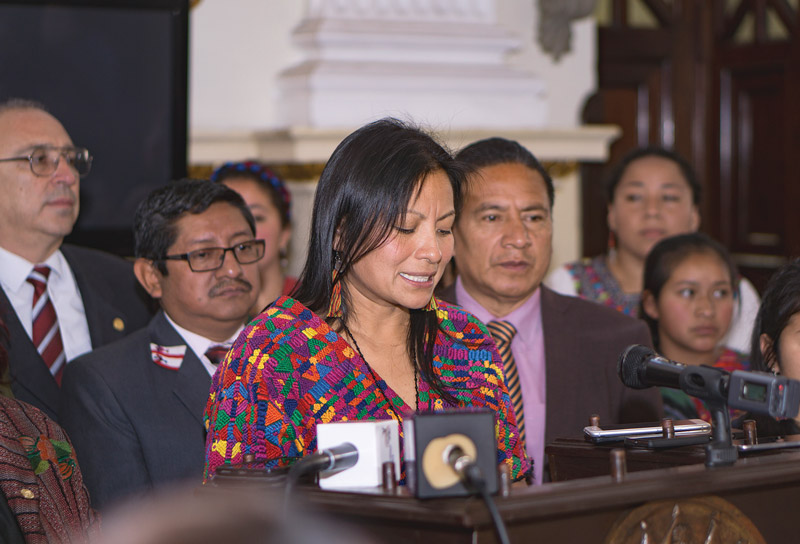
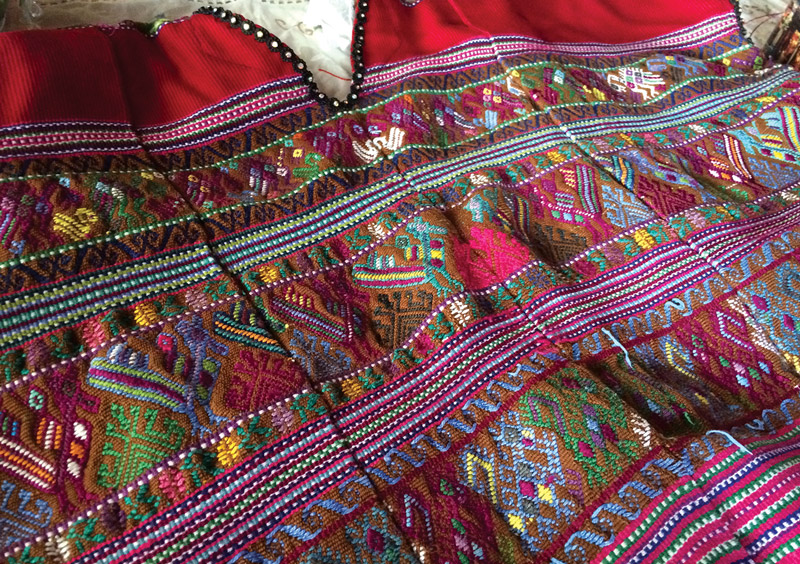
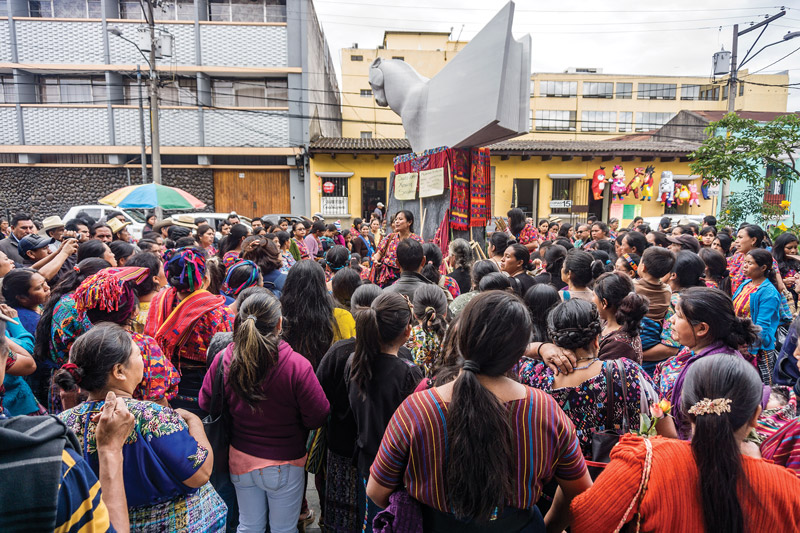
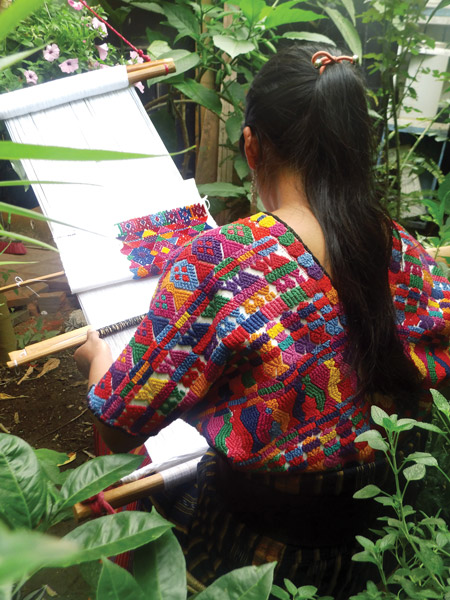
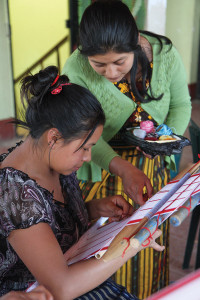
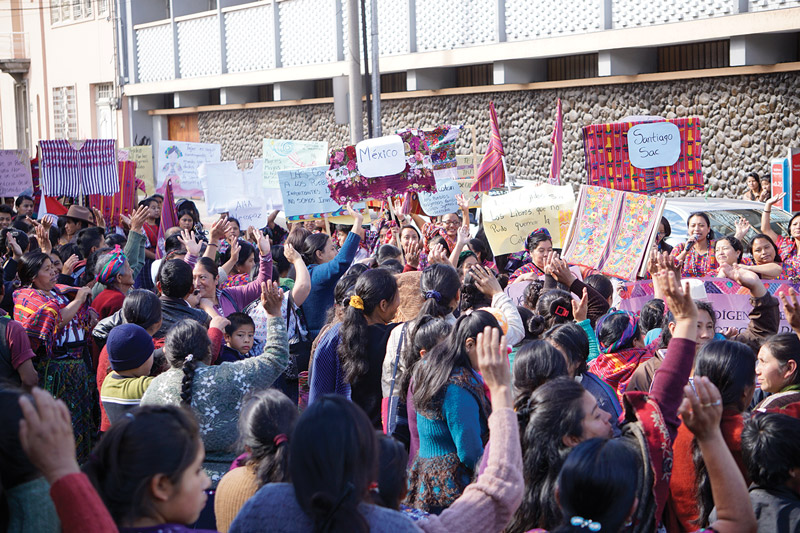
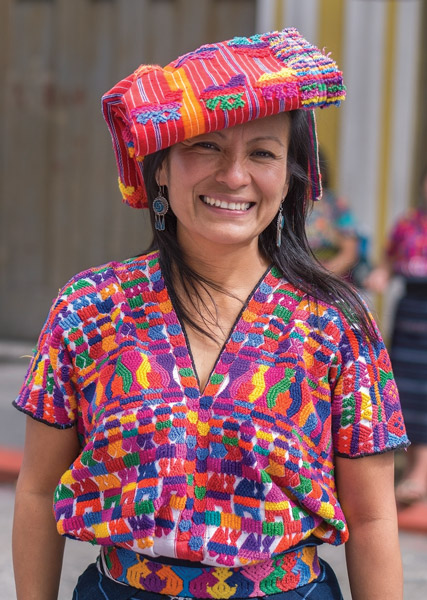
Pingback: Don’t Call Me Maria | Elizabeth Anne Rose
It is about time someone speaks up defending the indigenous traditional clothing and designs, somehow I knew that some outside company would take advantage of the indigenous people to make out of their heritage a lucrative business without any consent or compensation for them, to create these beautiful clothing and designs takes hard work and talent and is not fair for them to be taken advantage of. Thank you Angelina for taking action.
I learn a little bit more about history, culture, life, each and every day. Thank you.
Pingback: Don’t Call Me María part 2 - Revue Magazine
Pingback: Don't Call Me María part 3 - Revue Magazine
Pingback: Weaving a narrative – Thousand Currents